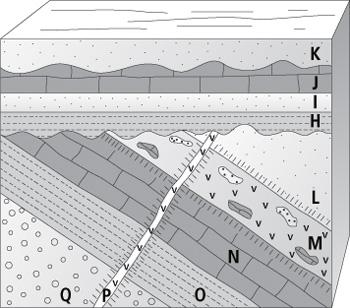All unconformities represent a gap in time when no sediment was deposited.
May be a result of change in environment or earths movements.
Occur where the rocks above the unconformity have a different dip or strike to the rocks below the plane of unconformity.

Comments
No comments have yet been made